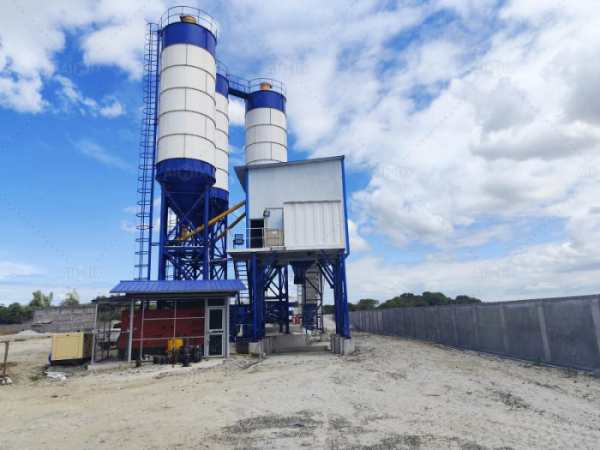


Global demand for batching plants grows due to urbanization, infrastructure projects, and preference for flexible, sustainable solutions.
The global construction industry continues to grow rapidly, driven by urbanization, infrastructure expansion, and residential development. As a result, the demand for concrete production equipment has surged, particularly for batching plants, which are essential for producing high-quality concrete efficiently. Understanding the global demand for different types of batching plant—including stationary, mobile, and modular systems—is crucial for manufacturers, investors, and construction companies looking to optimize project outcomes.
Batching plants are broadly categorized based on their mobility, capacity, and mixing method:
Stationary Batching Plant – Fixed installations designed for large-scale production. Ideal for long-term projects, highways, airports, and urban infrastructure.
Mobile Batching Plant – Compact, transportable units suitable for remote or temporary construction sites. They offer flexibility and fast setup.
Modular or Prefabricated Batching Plant – Pre-engineered units that can be assembled and disassembled easily, combining mobility with scalability.
Each type serves different market needs, and demand trends vary by region, project type, and economic factors.
The demand for batching plants is influenced by regional construction activity, infrastructure investment, and urbanization levels:
Asia-Pacific – This region leads global demand due to rapid urbanization, large-scale highway projects, and residential development. Countries like China, India, and Indonesia have a high requirement for both stationary and mobile plants to meet diverse project needs.
North America – Demand focuses on stationary batching plants for urban infrastructure and commercial construction. Investments in green building projects also increase the need for advanced, energy-efficient plants.
Europe – Emphasis on sustainable construction and modular designs drives demand for eco-friendly and automated batching plants. Renovation and expansion projects in cities contribute to steady growth.
Middle East and Africa – Growing urbanization and industrial projects generate demand for mobile batching plants, which provide flexibility in regions with limited infrastructure.
Latin America – Infrastructure development and road construction projects create a mix of demand for both stationary and mobile plants, especially in countries with challenging terrain.
Several key factors influence the worldwide growth of batching plants:
Urbanization and Infrastructure Expansion – Increasing road, bridge, and residential construction projects directly drive the need for high-capacity concrete production.
Technological Advancements – Automation, smart control systems, and energy-efficient designs attract developers who prioritize quality and efficiency.
Sustainability Goals – Green construction practices, including low-carbon concrete and recycling capabilities, are boosting demand for modern batching plants.
Project Flexibility – Mobile and modular plants are particularly popular in regions where construction sites change frequently or lack permanent infrastructure.
Economic Growth – Countries experiencing rapid industrialization and urban growth naturally increase their investment in concrete production equipment.
Global demand varies depending on the type of batching plant:
Stationary Plants – Preferred for high-volume, long-term projects where consistent quality and large output are required. Their robust design and high capacity make them the backbone of infrastructure projects.
Mobile Plants – Chosen for projects in remote areas, temporary work sites, or locations requiring frequent relocation. Their lower setup cost and rapid deployment enhance operational flexibility.
Modular Plants – Growing in popularity due to their combination of mobility, scalability, and easier maintenance. They are suitable for medium-scale projects and temporary urban construction.
Market trends indicate a balanced demand, with stationary plants dominating large-scale urban projects and mobile/modular plants capturing growth in developing regions and flexible construction scenarios.
The global demand for batching plants is expected to remain strong, driven by ongoing urbanization, large-scale infrastructure investments, and technological innovation. Key trends include:
Integration of AI and IoT – Enhancing efficiency, predictive maintenance, and quality control.
Sustainable Designs – Energy-efficient, low-emission plants that support eco-friendly construction practices.
Emerging Markets – Increasing demand in Southeast Asia, Africa, and Latin America as governments invest in road, housing, and industrial projects.
Manufacturers and suppliers focusing on flexibility, sustainability, and automation are likely to capture the largest share of the growing global market.
The global demand for different types of batching plant reflects the diverse needs of the construction industry. Stationary plants dominate high-volume, long-term projects, while mobile and modular plants address flexibility, temporary sites, and developing markets. With urbanization, infrastructure expansion, and sustainability goals driving construction worldwide, the market for batching plants is expected to remain robust, offering opportunities for manufacturers, contractors, and investors seeking to optimize concrete production capabilities.
